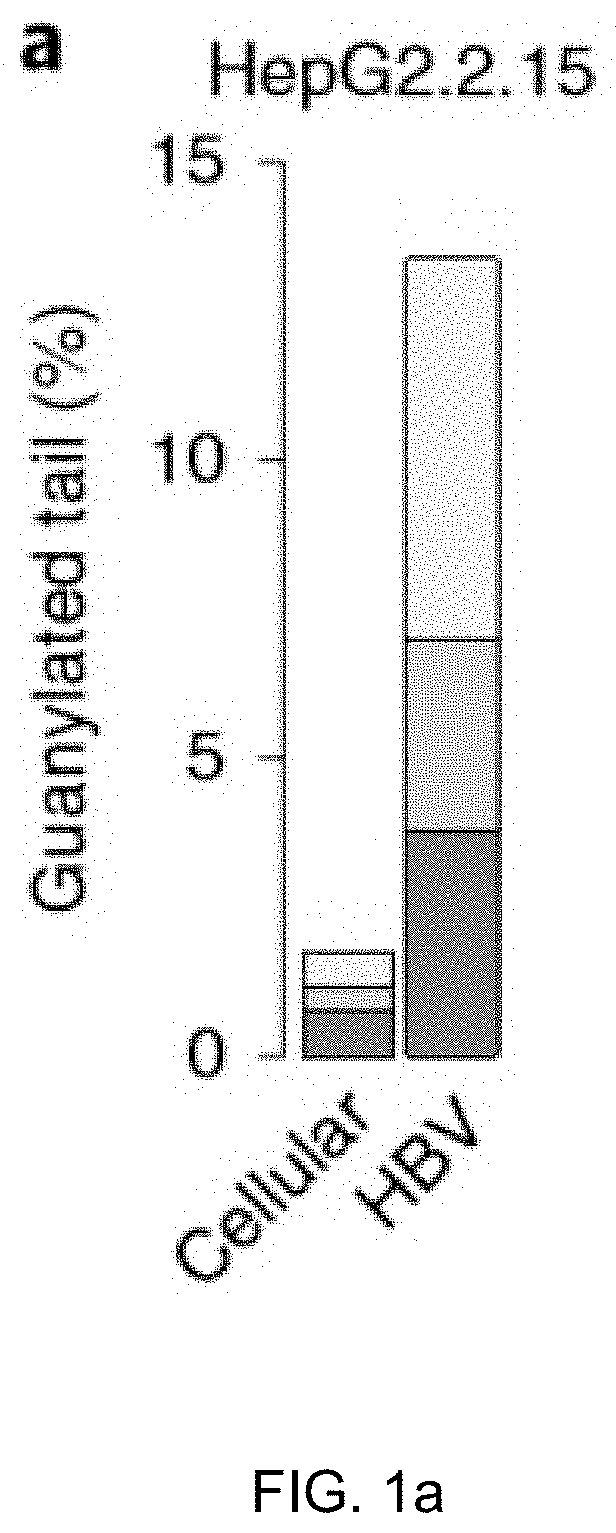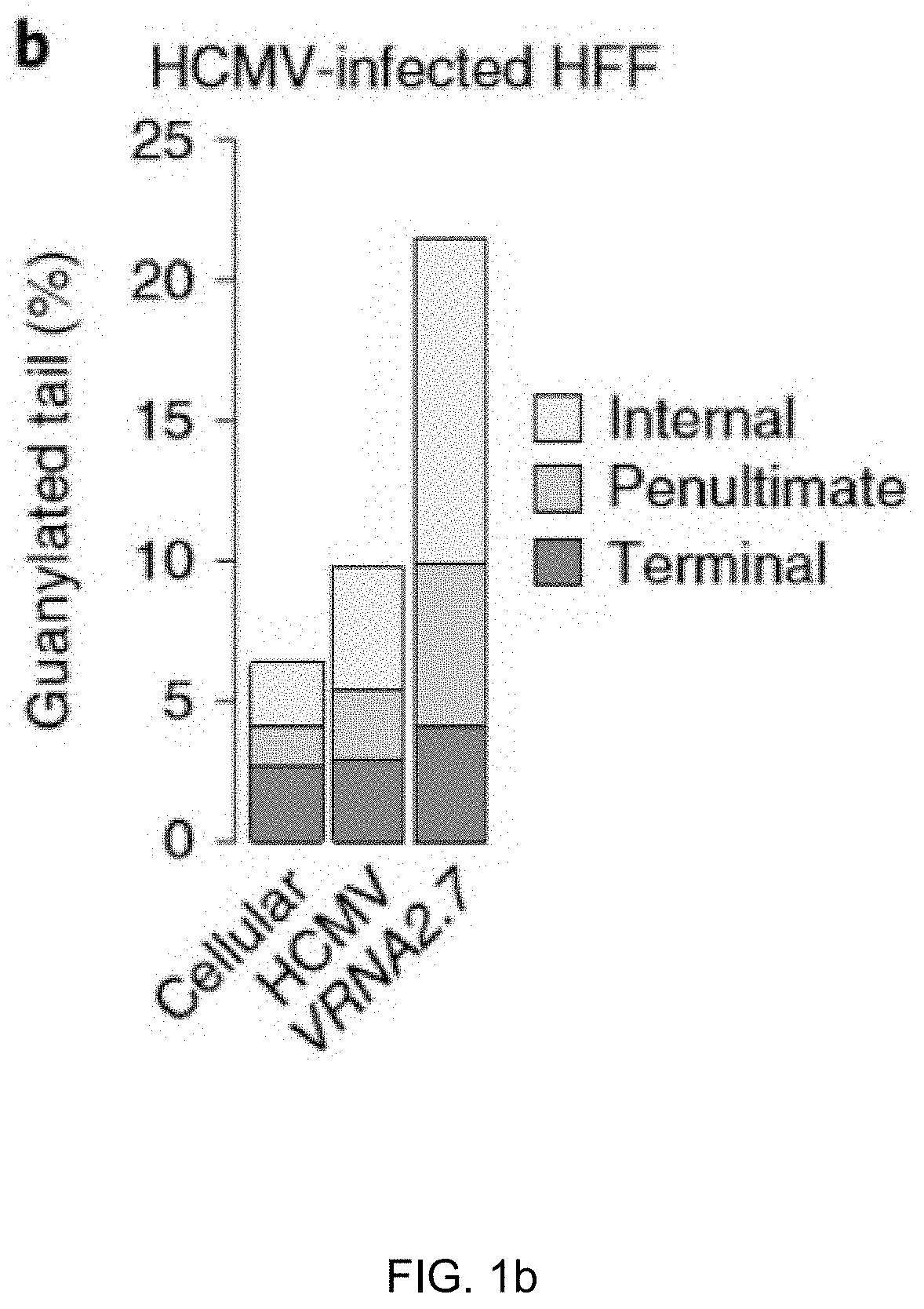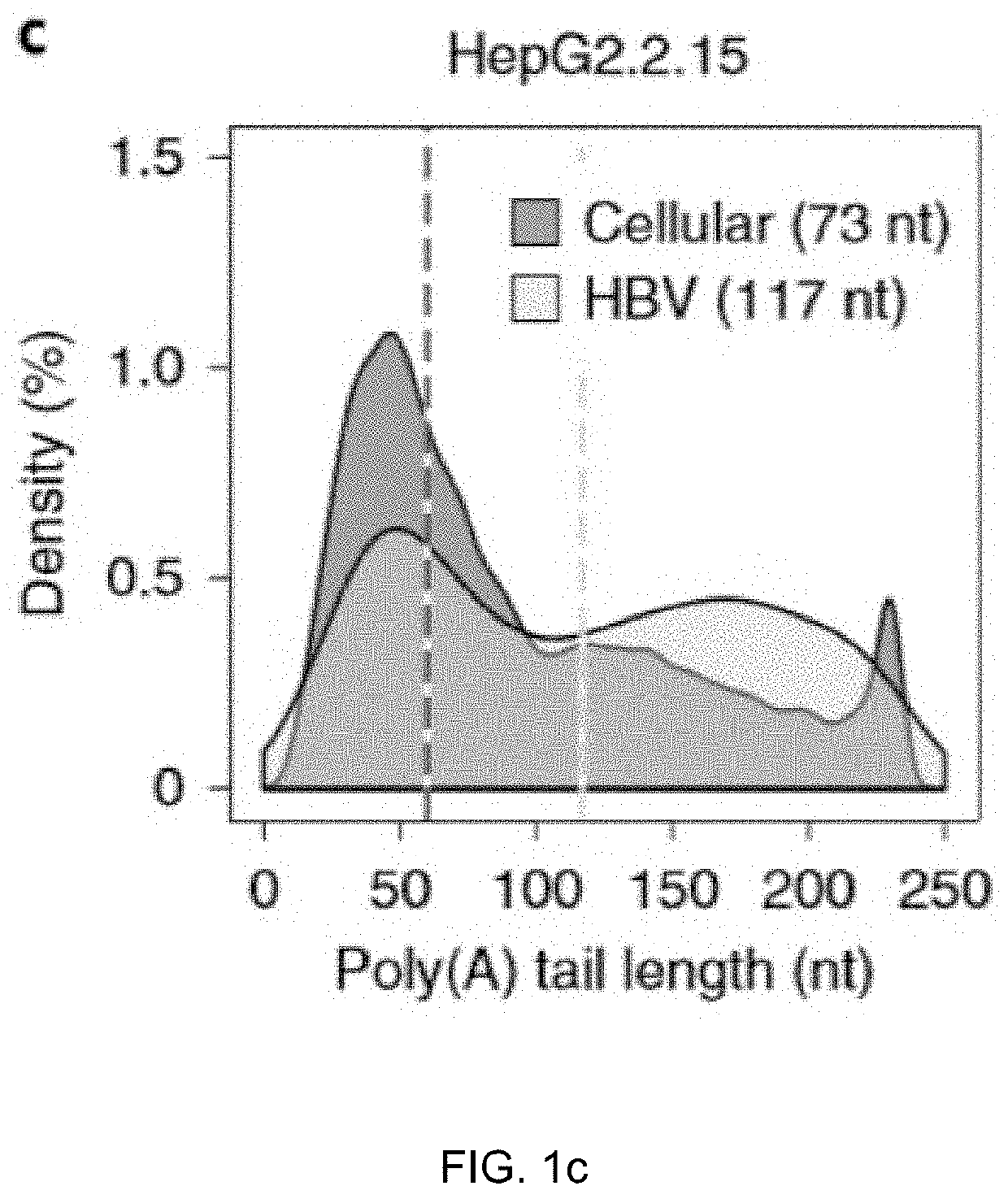Method for inhibiting infection and activation of virus
- Summary
- Abstract
- Description
- Claims
- Application Information
AI Technical Summary
Benefits of technology
Problems solved by technology
Method used
Image
Examples
example 1
Library Preparation and Data Processing
[0077]TAIL-seq was conducted as previously described [3]. In brief, ˜50 μg of DNasel (Takara, 2270A) treated total RNA (>200 nt) was used to deplete ribosomal RNA twice by Ribo-Zero kit (Epicentre, MRZH11124 (discontinued) for primary HFF library or Illumina, TruSeq Stranded Total RNA Library Prep Human / Mouse / Rat, 20020596 for HepG2.2.15 library). The rRNA-depleted RNAs were ligated to the 3′ adapter and partially fragmented by RNase T1 (Ambion). The fragmented RNAs were pulled-down with streptavidin beads (Invitrogen), 5′ phosphorylated and purified by 6% urea-PAGE gel (500-1,000 nt). The purified RNAs were ligated to the 5′ adapter, reverse-transcribed and amplified by PCR. The libraries were sequenced by paired-end run (51×251 cycles) on the Illumina platform (MiSeq) with PhiX control library v.3 (Illumina) and spike-in mixture. TAIL-seq sequencing data have been deposited to the National Center for Biotechnology Information (NCBI) Gene Expr...
example 2
Library Preparation and Data Processing
[0078]fCLIP-seq was performed as previously described with minor modifications [16,52]. In brief, HepG2.2.15 cells on two 150 mm dishes were crosslinked with 0.1% paraformaldehyde (Pierce, 28906), collected and lysed. Fifteen μg of each antibody (NMG, Santa Cruz, sc-2025; TENT4A, laboratory made; TENT4B, laboratory made) was conjugated to protein A and G Sepharose beads (1:1 mix, total 20 μl, GE Healthcare, 17-5138-01 and 17-0618-01, respectively). Lysates were incubated with antibody-conjugated beads, and RNAs were purified from the eluates followed by DNasel treatment and washing. Then, 1 μμg of input RNAs or RNAs from each sample were prepared for the libraries. rRNAs were depleted twice by Ribo-Zero kit (Illumina, TruSeq Stranded Total RNA Library Prep Human / Mouse / Rat, 20020596). The rRNA-depleted RNAs were ligated to the 3′ adapter and purified by 6% urea-PAGE gel (80-500 nt, corresponding to 50-470 nt RNAs that were fragmented by sonicati...
example 3
ure, Transfection and Actinomycin D Treatment
[0081]All cell lines used in this study were tested negative for mycoplasma. HeLaT was derived from HeLa (gift from C.-H. Chung at Seoul National University) with a null mutation in the TUT4 gene. HeLaT and HEK293T (gift from S. Kim at Seoul National University) cells were authenticated by ATCC (STR profiling). HepG2.2.15, HeLaT and HEK293T cells were grown in DMEM (Welgene, LM 001-05) containing 10% FBS (Welgene, S001-01). Primary HFF (ATCC SCRC-1041) cells were grown in DMEM (HyClone) containing 10% FBS (HyClone), GlutaMAX-I (Gibco), and penicillin-streptomycin (Gibco). Before transfection, primary HFF were grown in antibiotics-free media.
[0082]For combinatorial knockdown, equal amounts of small-interfering RNAs or GAPmer against target genes were mixed to have a final concentration denoted as discussed in the following. For TENT4A and TENT4B knockdown, HepG2.2.15 cells were transfected with 100 nM siRNAs by Lipofectamine RNAiMAX (Invit...
PUM
| Property | Measurement | Unit |
|---|---|---|
| Fraction | aaaaa | aaaaa |
Abstract
Description
Claims
Application Information
 Login to View More
Login to View More - R&D Engineer
- R&D Manager
- IP Professional
- Industry Leading Data Capabilities
- Powerful AI technology
- Patent DNA Extraction
Browse by: Latest US Patents, China's latest patents, Technical Efficacy Thesaurus, Application Domain, Technology Topic, Popular Technical Reports.
© 2024 PatSnap. All rights reserved.Legal|Privacy policy|Modern Slavery Act Transparency Statement|Sitemap|About US| Contact US: help@patsnap.com










